BUS101 Intercultural Communication Presentation and Theory
VerifiedAdded on 2023/06/04
|11
|628
|467
Presentation
AI Summary
This presentation provides an overview of intercultural communication, including its definition, relevant theories, and real-life applications in the workplace. It highlights the importance of understanding cultural differences in today's globalized business environment and emphasizes the need for effective communication strategies. The presentation references Edward Hall's Paradigm Theory and suggests practical approaches such as guided group activities and cross-cultural team assignments to promote positive interaction and learning among employees from diverse cultural backgrounds. It concludes that intercultural communication is a dynamic and essential skill for success in modern organizations. Desklib provides access to similar presentations and study resources.
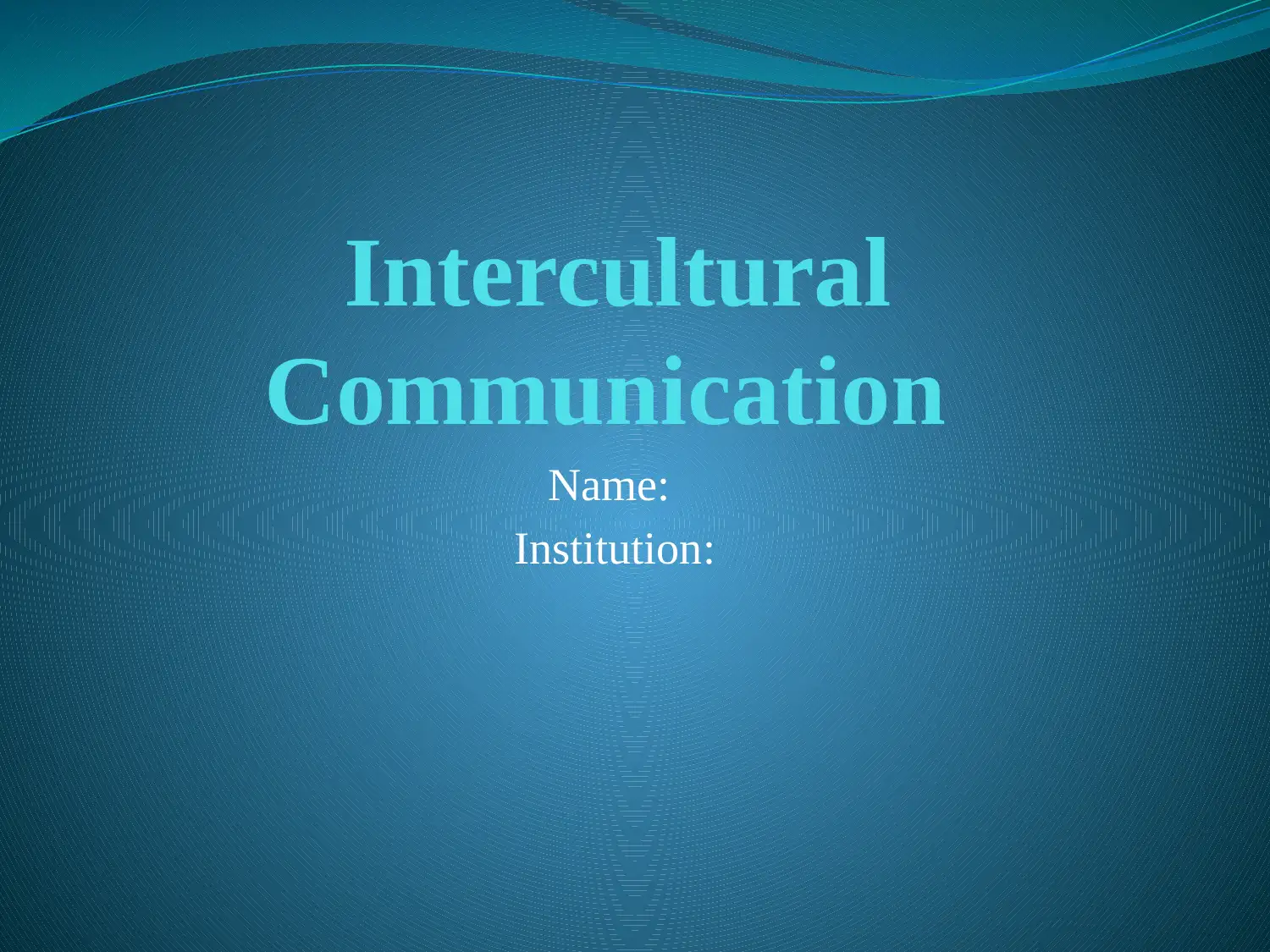
Intercultural
Communication
Name:
Institution:
Communication
Name:
Institution:
Paraphrase This Document
Need a fresh take? Get an instant paraphrase of this document with our AI Paraphraser
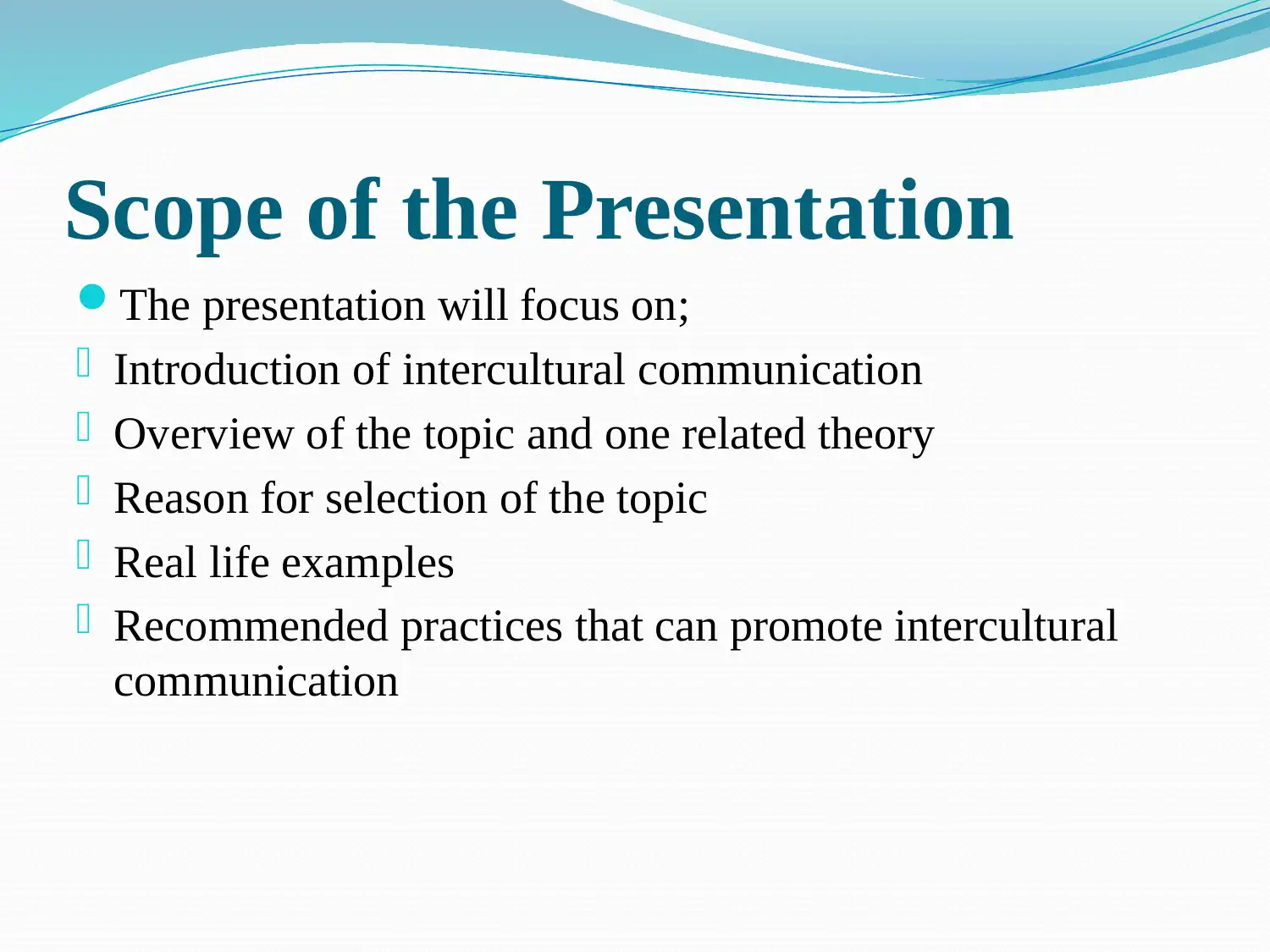
Scope of the Presentation
The presentation will focus on;
Introduction of intercultural communication
Overview of the topic and one related theory
Reason for selection of the topic
Real life examples
Recommended practices that can promote intercultural
communication
The presentation will focus on;
Introduction of intercultural communication
Overview of the topic and one related theory
Reason for selection of the topic
Real life examples
Recommended practices that can promote intercultural
communication
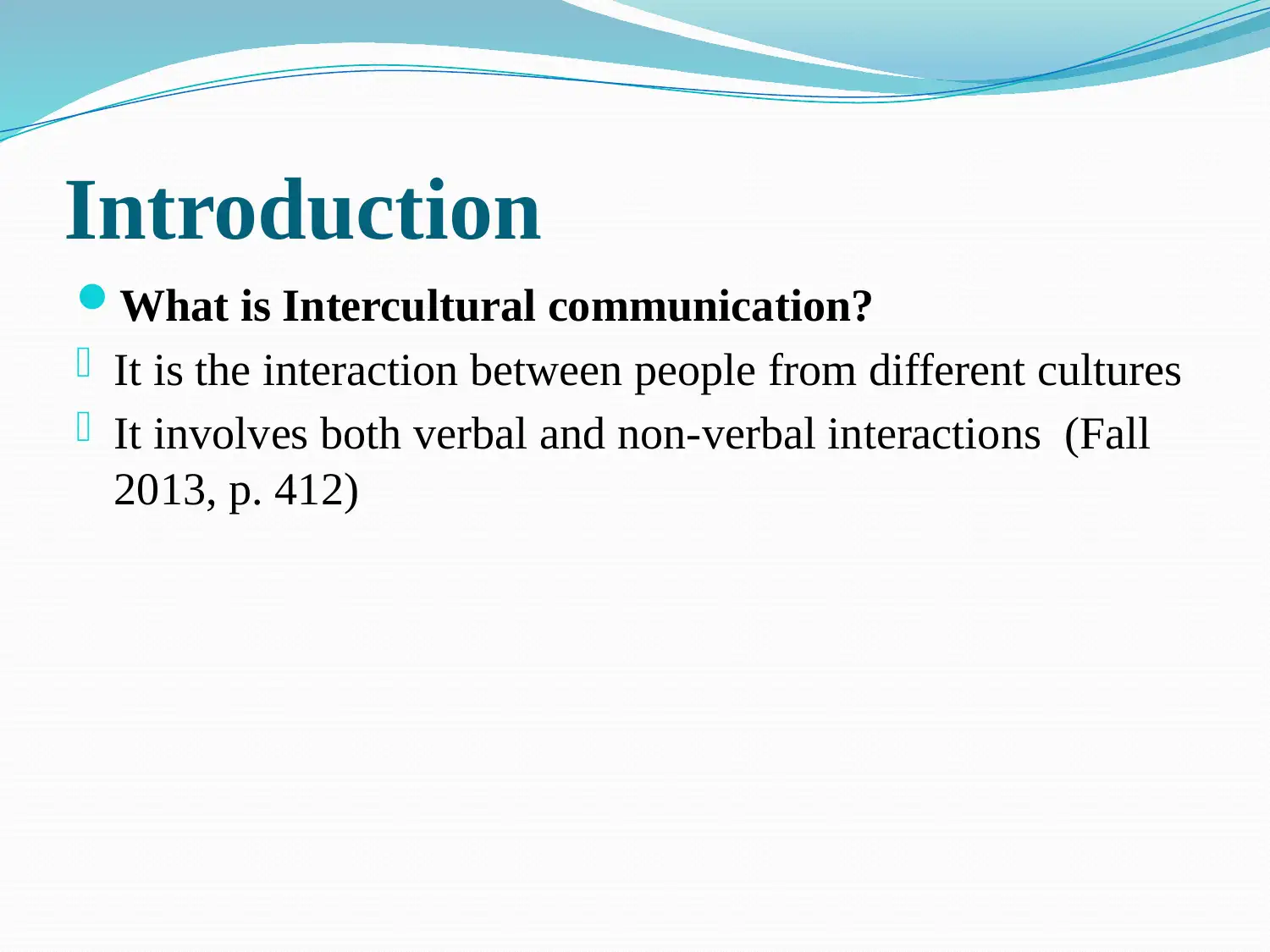
Introduction
What is Intercultural communication?
It is the interaction between people from different cultures
It involves both verbal and non-verbal interactions (Fall
2013, p. 412)
What is Intercultural communication?
It is the interaction between people from different cultures
It involves both verbal and non-verbal interactions (Fall
2013, p. 412)
⊘ This is a preview!⊘
Do you want full access?
Subscribe today to unlock all pages.

Trusted by 1+ million students worldwide
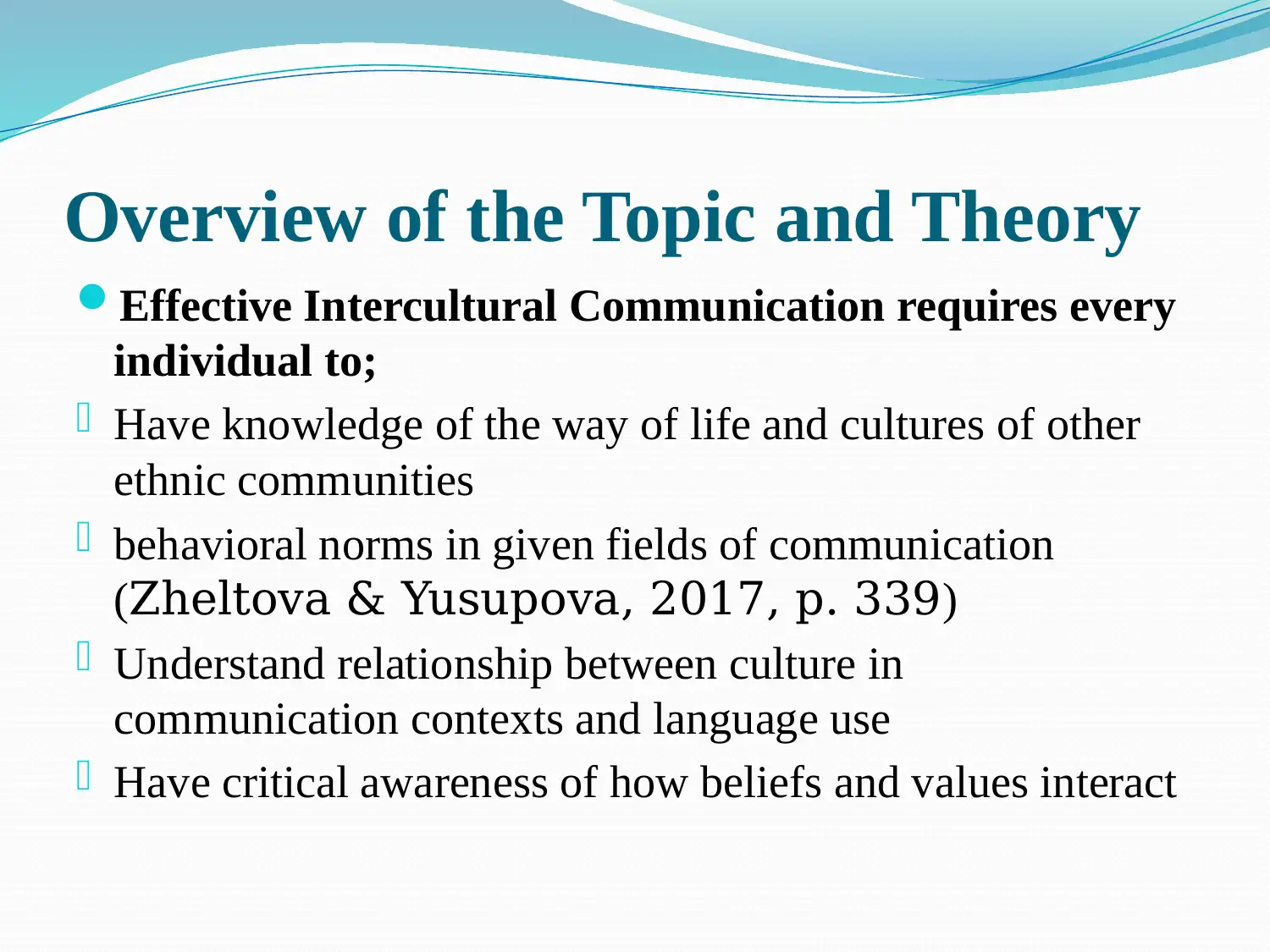
Overview of the Topic and Theory
Effective Intercultural Communication requires every
individual to;
Have knowledge of the way of life and cultures of other
ethnic communities
behavioral norms in given fields of communication
(Zheltova & Yusupova, 2017, p. 339)
Understand relationship between culture in
communication contexts and language use
Have critical awareness of how beliefs and values interact
Effective Intercultural Communication requires every
individual to;
Have knowledge of the way of life and cultures of other
ethnic communities
behavioral norms in given fields of communication
(Zheltova & Yusupova, 2017, p. 339)
Understand relationship between culture in
communication contexts and language use
Have critical awareness of how beliefs and values interact
Paraphrase This Document
Need a fresh take? Get an instant paraphrase of this document with our AI Paraphraser
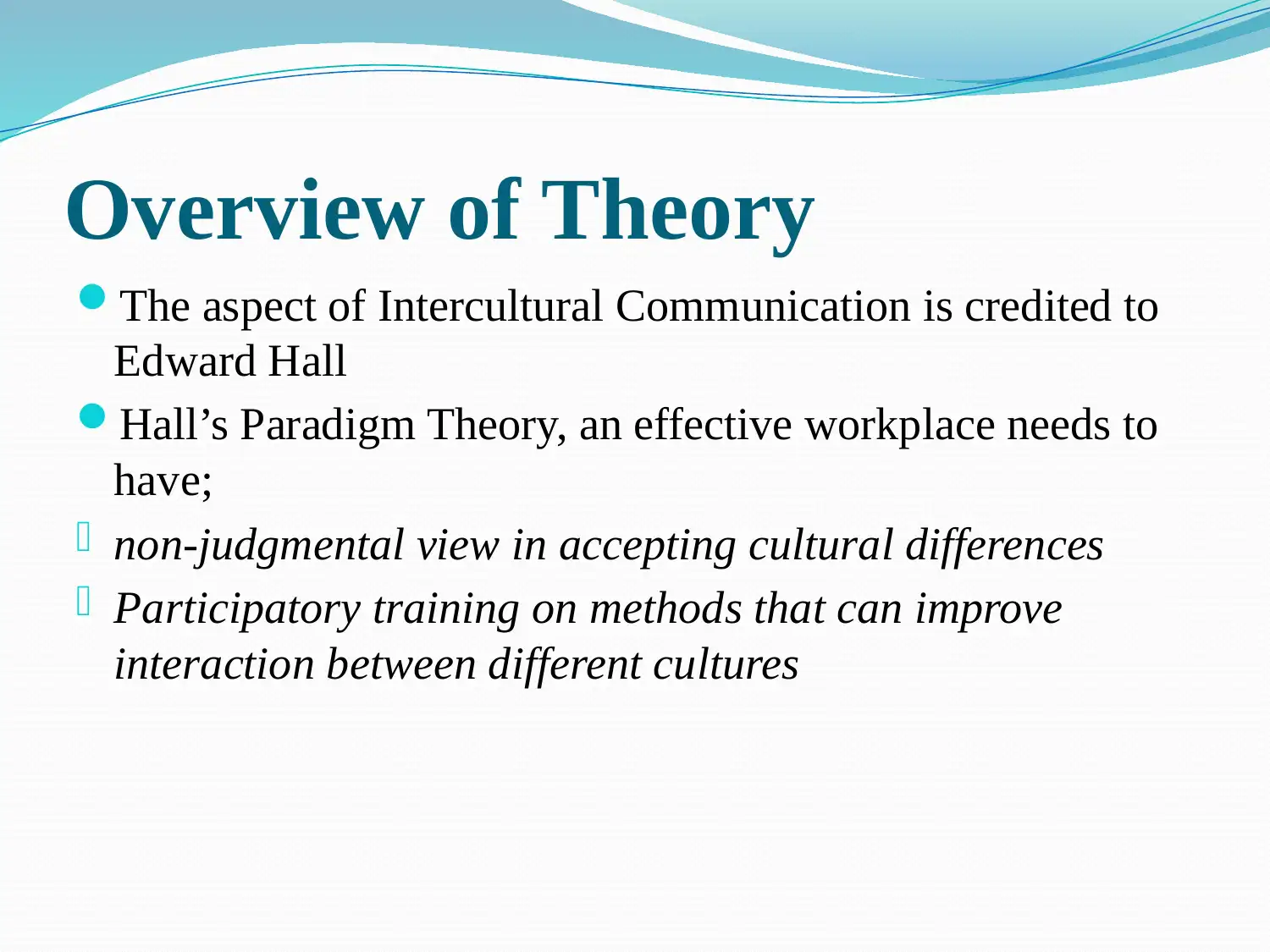
Overview of Theory
The aspect of Intercultural Communication is credited to
Edward Hall
Hall’s Paradigm Theory, an effective workplace needs to
have;
non-judgmental view in accepting cultural differences
Participatory training on methods that can improve
interaction between different cultures
The aspect of Intercultural Communication is credited to
Edward Hall
Hall’s Paradigm Theory, an effective workplace needs to
have;
non-judgmental view in accepting cultural differences
Participatory training on methods that can improve
interaction between different cultures
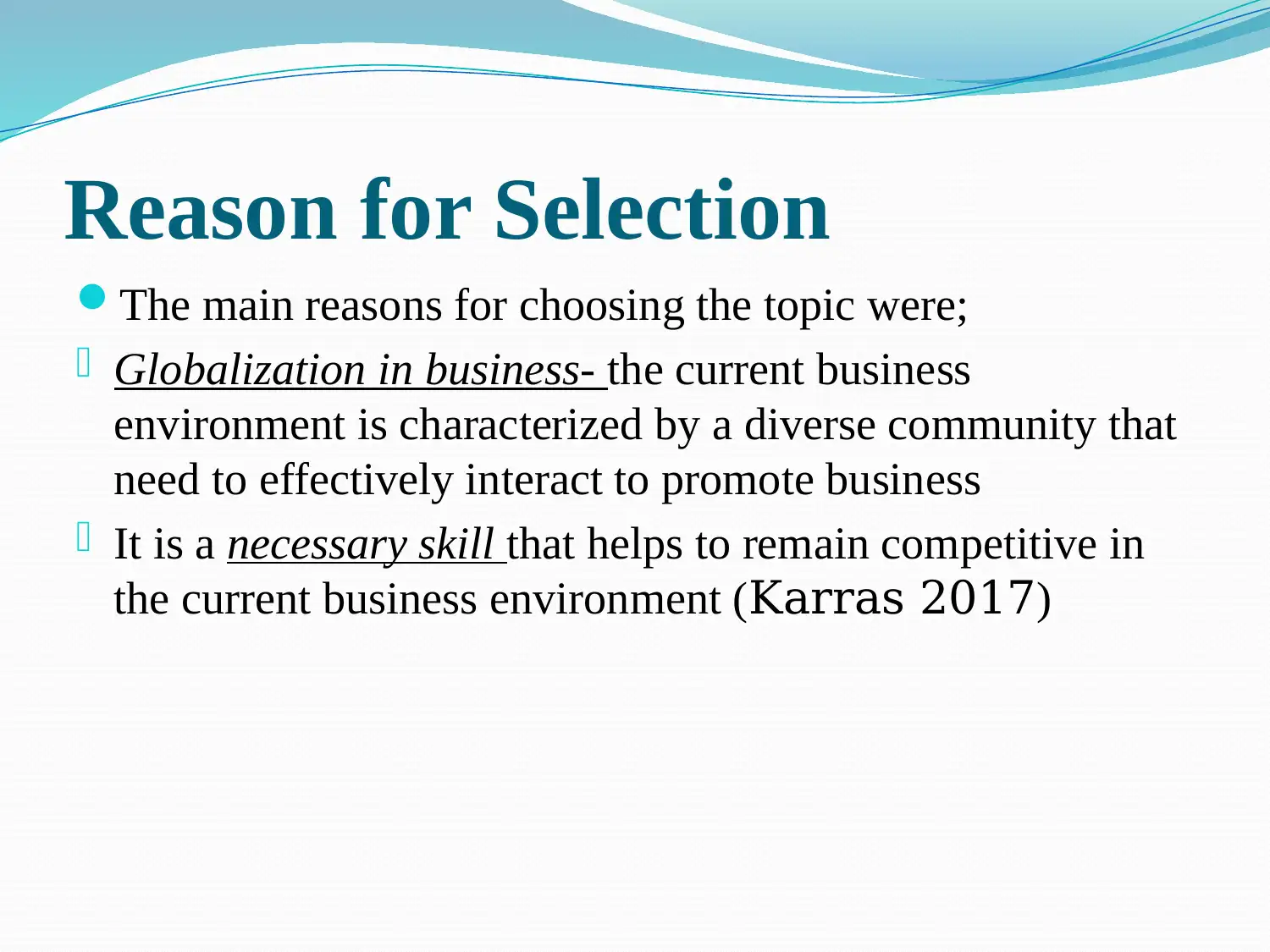
Reason for Selection
The main reasons for choosing the topic were;
Globalization in business- the current business
environment is characterized by a diverse community that
need to effectively interact to promote business
It is a necessary skill that helps to remain competitive in
the current business environment (Karras 2017)
The main reasons for choosing the topic were;
Globalization in business- the current business
environment is characterized by a diverse community that
need to effectively interact to promote business
It is a necessary skill that helps to remain competitive in
the current business environment (Karras 2017)
⊘ This is a preview!⊘
Do you want full access?
Subscribe today to unlock all pages.

Trusted by 1+ million students worldwide

Real Life Examples of Workplace
Applications
Globalization has
resulted into;
Interaction between
different
communities
International
business investments
in other countries
Mergers of different
companies
Applications
Globalization has
resulted into;
Interaction between
different
communities
International
business investments
in other countries
Mergers of different
companies
Paraphrase This Document
Need a fresh take? Get an instant paraphrase of this document with our AI Paraphraser

New Practices to Promote the
Intercultural Communication
1. Guided Group Activities
The strategy will be adopted regularly in the workplace
Aims:
Promoting positive interaction between different cultures
within the workplace
Help in learning the beliefs and values of different
cultures
Intercultural Communication
1. Guided Group Activities
The strategy will be adopted regularly in the workplace
Aims:
Promoting positive interaction between different cultures
within the workplace
Help in learning the beliefs and values of different
cultures

Cont.….
2. Combining employees from different cultures in one
department
Aim:
- When employees from different cultures work together, it
is possible that their interaction will help them to learn from
one another
2. Combining employees from different cultures in one
department
Aim:
- When employees from different cultures work together, it
is possible that their interaction will help them to learn from
one another
⊘ This is a preview!⊘
Do you want full access?
Subscribe today to unlock all pages.

Trusted by 1+ million students worldwide
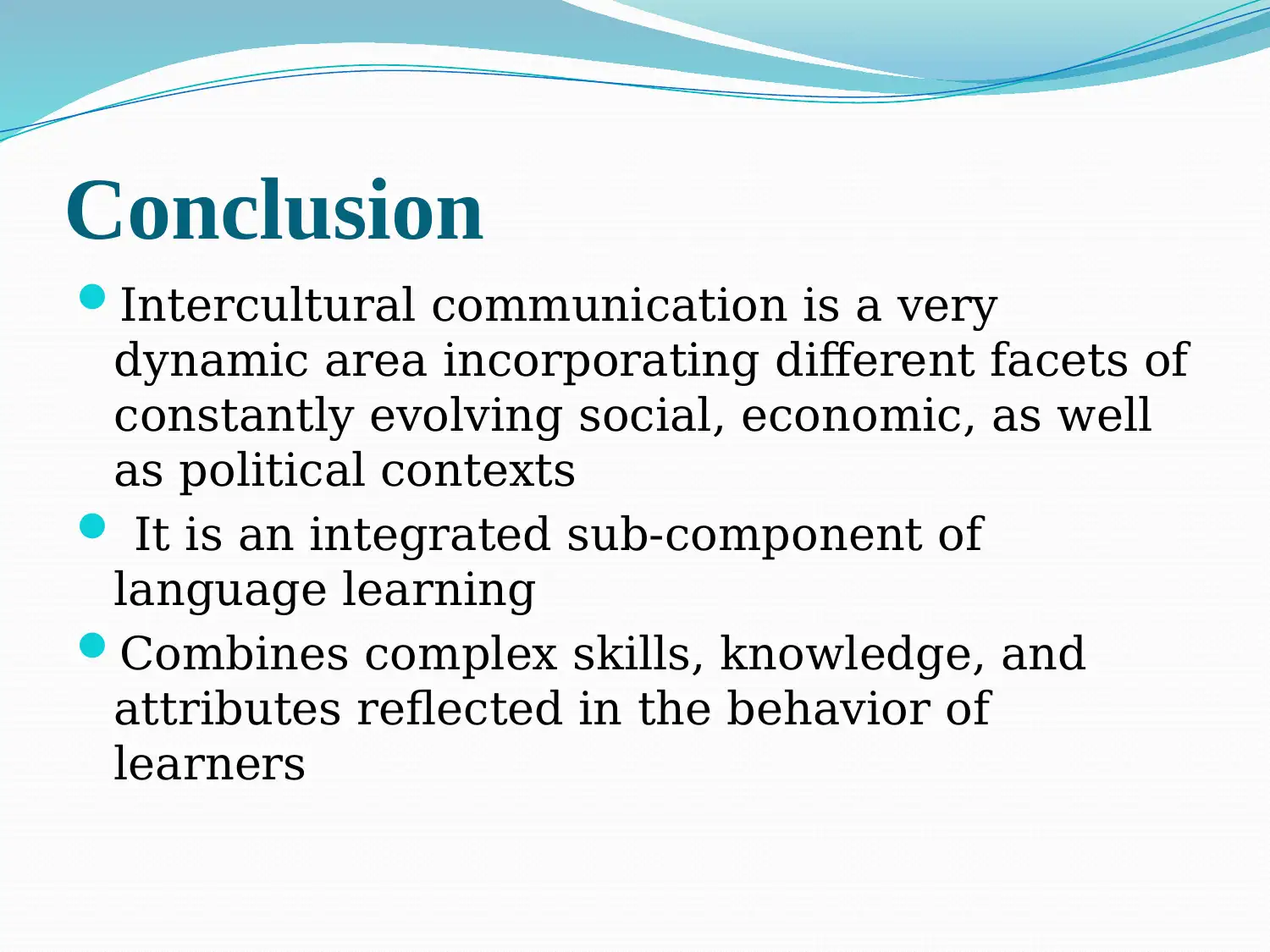
Conclusion
Intercultural communication is a very
dynamic area incorporating different facets of
constantly evolving social, economic, as well
as political contexts
It is an integrated sub‐component of
language learning
Combines complex skills, knowledge, and
attributes reflected in the behavior of
learners
Intercultural communication is a very
dynamic area incorporating different facets of
constantly evolving social, economic, as well
as political contexts
It is an integrated sub‐component of
language learning
Combines complex skills, knowledge, and
attributes reflected in the behavior of
learners
Paraphrase This Document
Need a fresh take? Get an instant paraphrase of this document with our AI Paraphraser
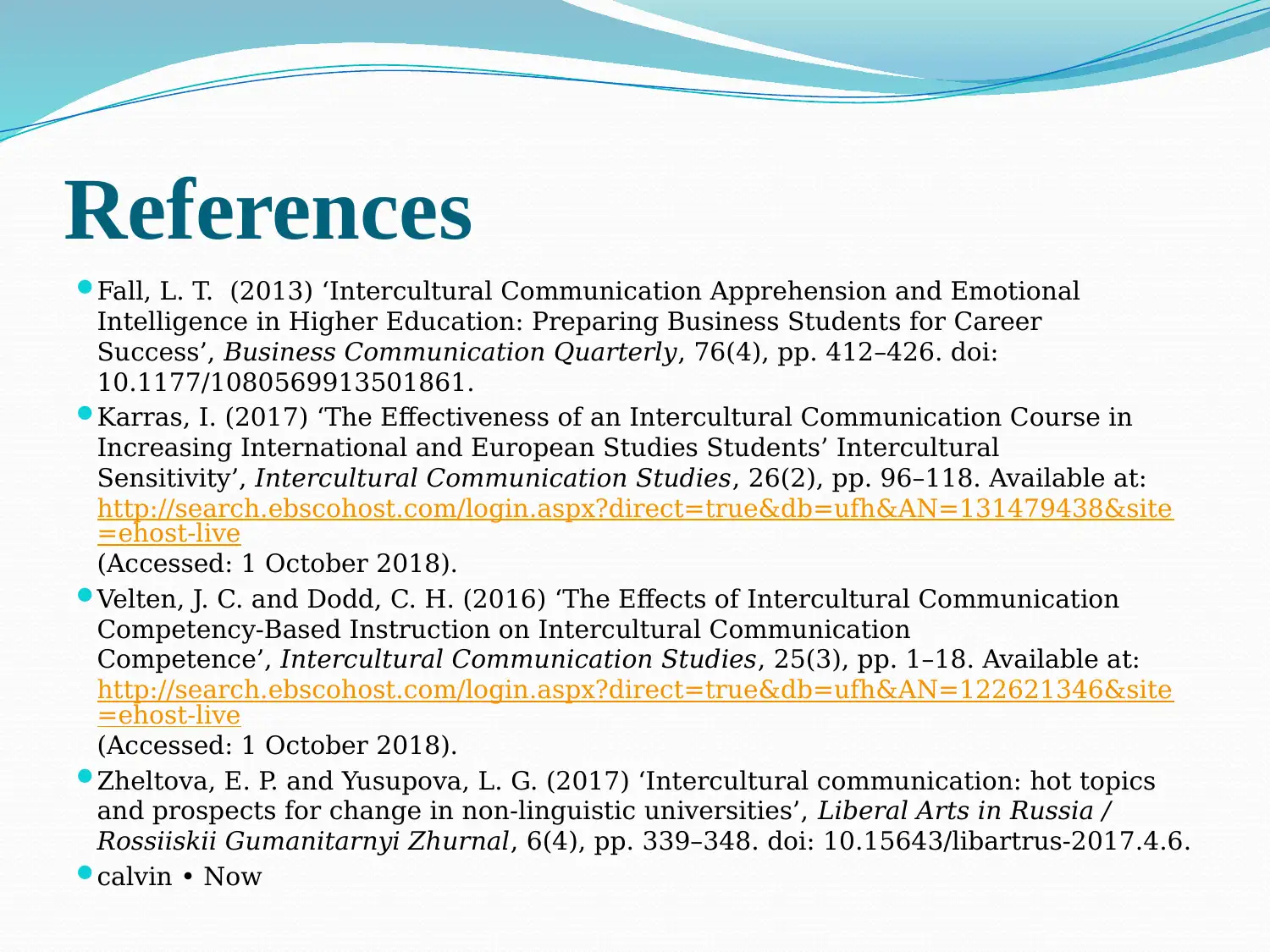
References
Fall, L. T. (2013) ‘Intercultural Communication Apprehension and Emotional
Intelligence in Higher Education: Preparing Business Students for Career
Success’, Business Communication Quarterly, 76(4), pp. 412–426. doi:
10.1177/1080569913501861.
Karras, I. (2017) ‘The Effectiveness of an Intercultural Communication Course in
Increasing International and European Studies Students’ Intercultural
Sensitivity’, Intercultural Communication Studies, 26(2), pp. 96–118. Available at:
http://search.ebscohost.com/login.aspx?direct=true&db=ufh&AN=131479438&site
=ehost-live
(Accessed: 1 October 2018).
Velten, J. C. and Dodd, C. H. (2016) ‘The Effects of Intercultural Communication
Competency-Based Instruction on Intercultural Communication
Competence’, Intercultural Communication Studies, 25(3), pp. 1–18. Available at:
http://search.ebscohost.com/login.aspx?direct=true&db=ufh&AN=122621346&site
=ehost-live
(Accessed: 1 October 2018).
Zheltova, E. P. and Yusupova, L. G. (2017) ‘Intercultural communication: hot topics
and prospects for change in non-linguistic universities’, Liberal Arts in Russia /
Rossiiskii Gumanitarnyi Zhurnal, 6(4), pp. 339–348. doi: 10.15643/libartrus-2017.4.6.
calvin • Now
Fall, L. T. (2013) ‘Intercultural Communication Apprehension and Emotional
Intelligence in Higher Education: Preparing Business Students for Career
Success’, Business Communication Quarterly, 76(4), pp. 412–426. doi:
10.1177/1080569913501861.
Karras, I. (2017) ‘The Effectiveness of an Intercultural Communication Course in
Increasing International and European Studies Students’ Intercultural
Sensitivity’, Intercultural Communication Studies, 26(2), pp. 96–118. Available at:
http://search.ebscohost.com/login.aspx?direct=true&db=ufh&AN=131479438&site
=ehost-live
(Accessed: 1 October 2018).
Velten, J. C. and Dodd, C. H. (2016) ‘The Effects of Intercultural Communication
Competency-Based Instruction on Intercultural Communication
Competence’, Intercultural Communication Studies, 25(3), pp. 1–18. Available at:
http://search.ebscohost.com/login.aspx?direct=true&db=ufh&AN=122621346&site
=ehost-live
(Accessed: 1 October 2018).
Zheltova, E. P. and Yusupova, L. G. (2017) ‘Intercultural communication: hot topics
and prospects for change in non-linguistic universities’, Liberal Arts in Russia /
Rossiiskii Gumanitarnyi Zhurnal, 6(4), pp. 339–348. doi: 10.15643/libartrus-2017.4.6.
calvin • Now
1 out of 11
Related Documents
Your All-in-One AI-Powered Toolkit for Academic Success.
+13062052269
info@desklib.com
Available 24*7 on WhatsApp / Email
![[object Object]](/_next/static/media/star-bottom.7253800d.svg)
Unlock your academic potential
Copyright © 2020–2025 A2Z Services. All Rights Reserved. Developed and managed by ZUCOL.




